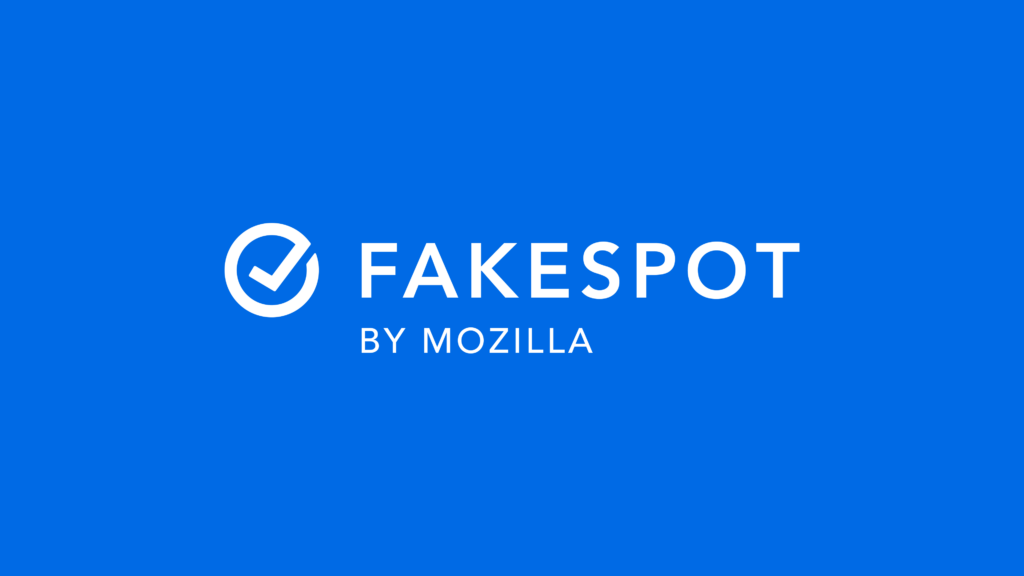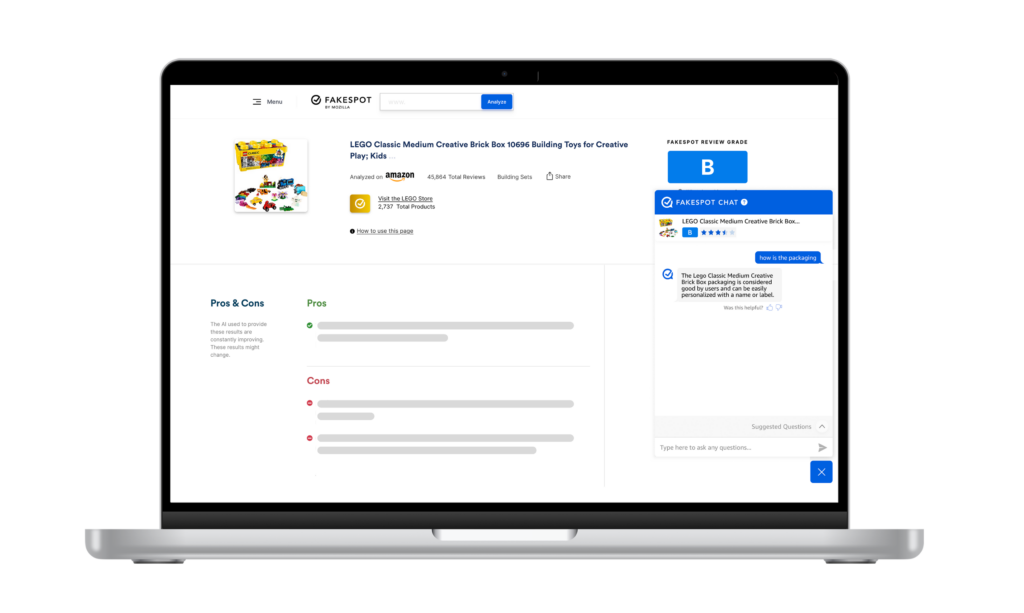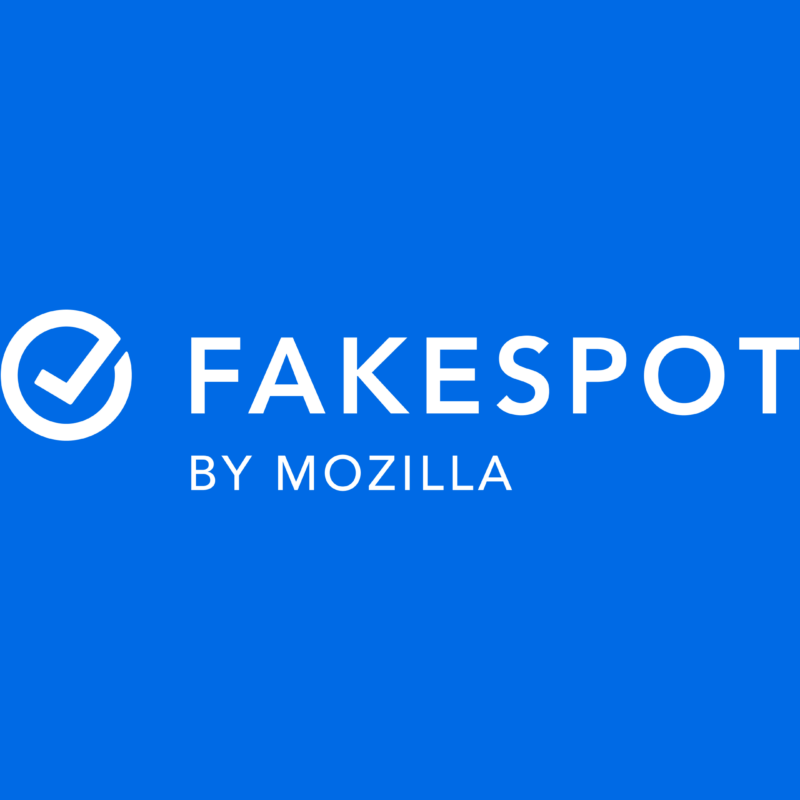The Future of Shopping

It's clear that online shopping has given consumers more choices than ever, offering remarkable convenience with a few clicks of a button. But there's a catch. With Fakespot by Mozilla, which uses AI to detect fake reviews and scams, we've seen it all when it comes to e-commerce. Counterfeits, fake reviews, review flooding, and nowadays, more GPT-generated fake reviews and fraudulent trends that rapidly explode and recede as trends naturally progress.
While technologies come and go, in shopping there is an underlying attribute that is fundamental to any transaction on the internet: trust. It's the cornerstone of successful e-commerce - promising safe transactions, consumer confidence and authenticity. With the speed of innovation and the importance of trust in mind, what does the future of shopping look like?
This is a question that has been on our minds as we've developed features such as Fakespot Pros and Cons. Powered by generative AI, Pros and Cons was released last year, long before public concerns sparked by large language models, primarily led by ChatGPT release late last year. Since its inception, Fakespot has utilized artificial intelligence as a critical part of our platform. We built it to be a trusted guide that saves you time and money by leveraging AI technology that protects consumers from the start of their shopping journey.
It's right to be skeptical; with most of the AI models we see today, it seems trust and security are always an afterthought. Fast-paced technology releases are emblematic of that, leading to situations where it's too late to fix the problem once it appears. What's staggering is that with each iteration in innovation for AI, the amount that we understand about what happens under the hood fades considerably with each release. Sometimes we truly don't know how a model comes up with its outputs because they operate at dimensions the human mind cannot comprehend. That is concerning. So, for the future of shopping, our solution is this: factor in consumer trust and security at the initial stages of developing product features and models.
That's where Mozilla - a company that has been pioneering user-first innovations for more than 25 years - leads with trust and security with its AI efforts. This year, Mozilla announced it would commit $30 million to build Mozilla.ai, a startup focused on building a trustworthy, independent, and open-source AI ecosystem. Additionally, Mozilla hosted its first Responsible AI Challenge, which challenged builders to design and defend responsible and trustworthy AI solutions for a wide range of industries. Last month, Mozilla launched its AI Guide, a resource where developers come together to pioneer and drive generative AI innovations.
You can see this in action with Fakespot Chat, a new AI agent we're testing. Fakespot Chat will guide you as you're shopping by answering your questions with trust already built-in. This strengthens what we believe shopping should look like, in a world where a paradigm shift is occurring in consumer technology: privacy, safety and openness are imperative to our experiences as individuals on the internet.
 Fakespot Chat answers questions you have about a productHow Fakespot Chat works
Fakespot Chat answers questions you have about a productHow Fakespot Chat worksRemember the days, when you'd go to a physical store and ask the salesperson questions about a particular item before you purchased it? Fakespot Chat is our virtual version of that experience.
Fakespot Chat - which we are currently testing - is Mozilla's first large language model (LLM). We will be working to improve the accuracy of its responses and would like to get feedback from people who use it. Simply click the thumbs up button to let us know if the responses are accurate or thumbs down button if it is inaccurate. This will help improve the model and its responses.
Ultimately, our goal with Fakespot Chat is to reduce your product research time and lead you to better purchasing decisions. This is a free service available at Fakespot.com. Currently, Fakespot Chat is available for Amazon.com shoppers in the U.S.
Here's how Fakespot Chat works:
Step 1: Use the Fakespot Analyzer or analyze an Amazon.com product from our extension/add-on.
Step 2: If you are using the Fakespot Analyzer, copy and paste the URL of the product you have questions about. If you analyze a product from the extension/add-on, the analysis will automatically start.
Step 3: After analysis is complete, Fakespot Chat will appear on the right-hand side of an Analysis Page along with our core features such as Fakespot Review Grades, Pros and Cons, and Highlights.
Step 4: Start asking Fakespot Chat any questions about the product. If available, Fakespot Chat will suggest questions that may be a good place to start your research.
Fakespot's technology uses sophisticated AI and machine learning (ML) to sort through real and fake reviews to deliver the best answer to your questions. The only data that is collected is the data that you choose to share with us. Moreover, information about your session is only used to improve the functionality of Fakespot Chat for others. As always with Fakespot, we do not require you to create an account to use Fakespot Chat because we don't need to know who you are or what you are doing.
Try out Fakespot Chat by activating it at this link; we're currently progressively rolling it out to users on Fakespot.com. If you think Fakespot Chat's answer is right or wrong, you can help us improve the model by submitting feedback. Please share your general feedback and comments about the feature by visiting this link. We look forward to hearing from you as we build towards a better and more trusted shopping experience, together.
 Reduce product research time and make better purchases
Reduce product research time and make better purchases The post The Future of Shopping appeared first on The Mozilla Blog.